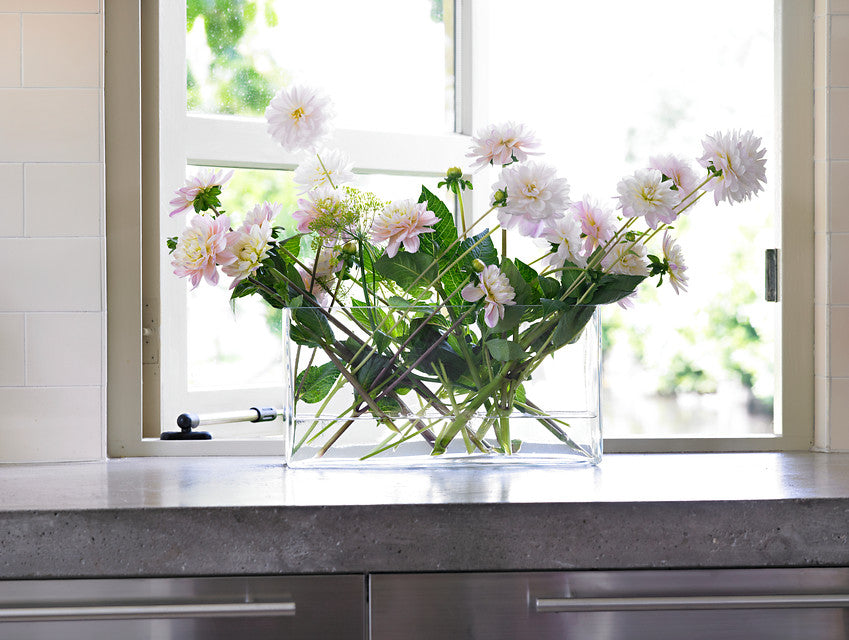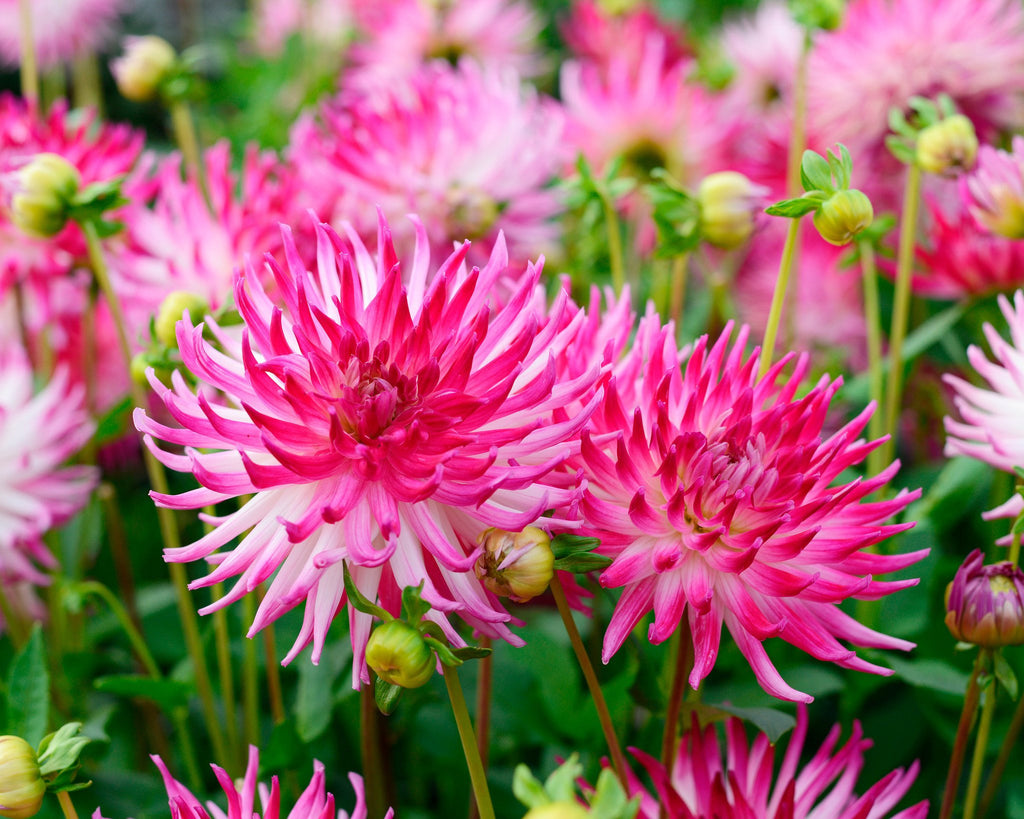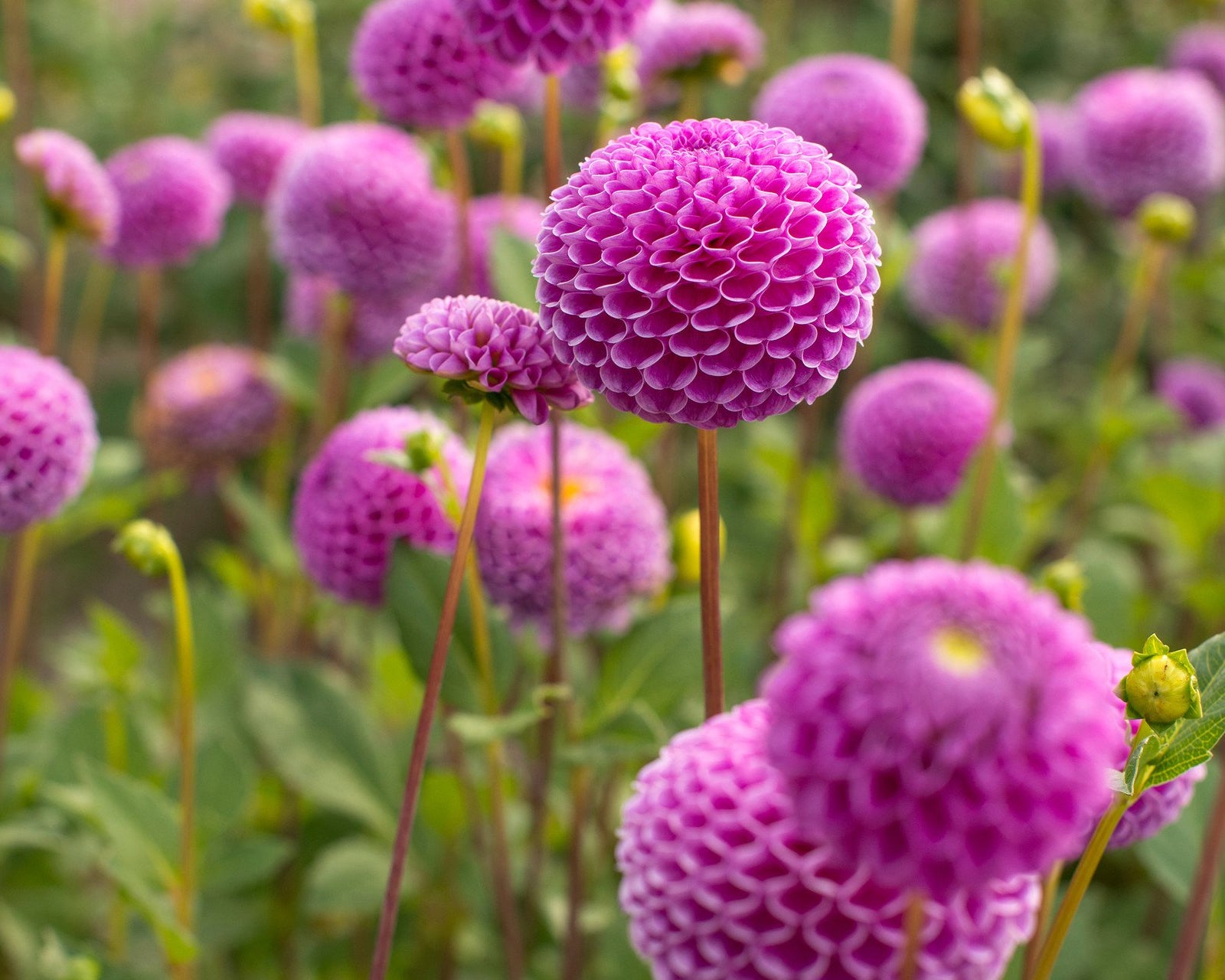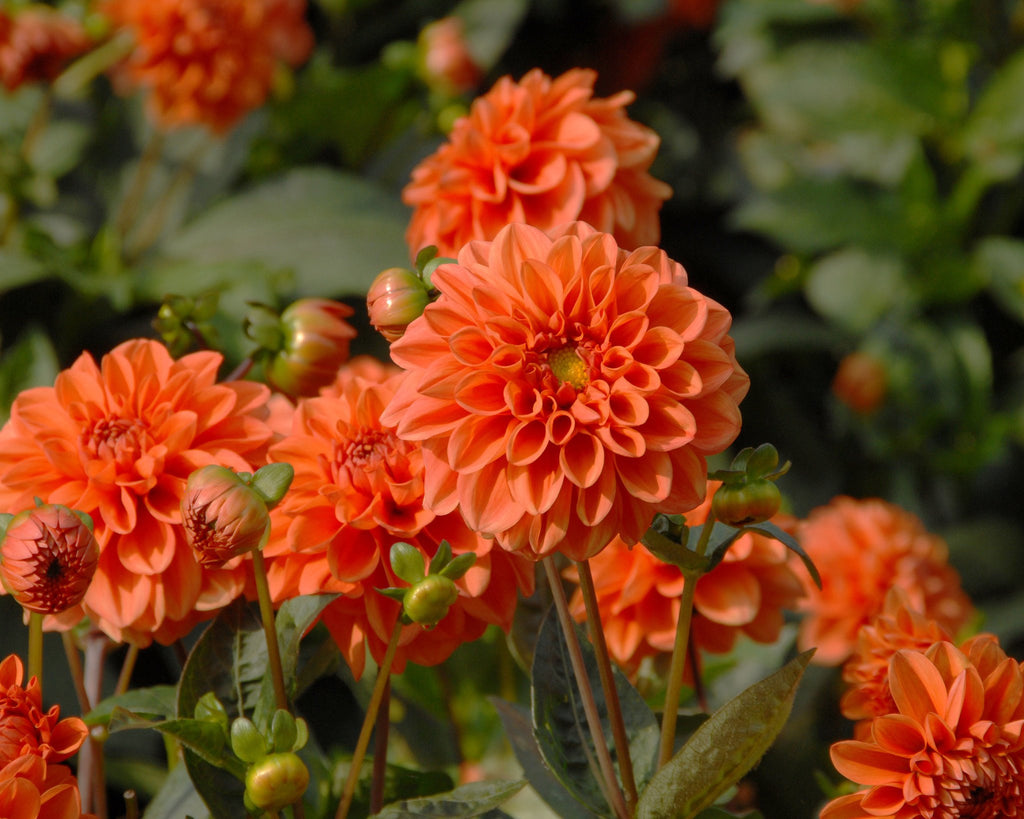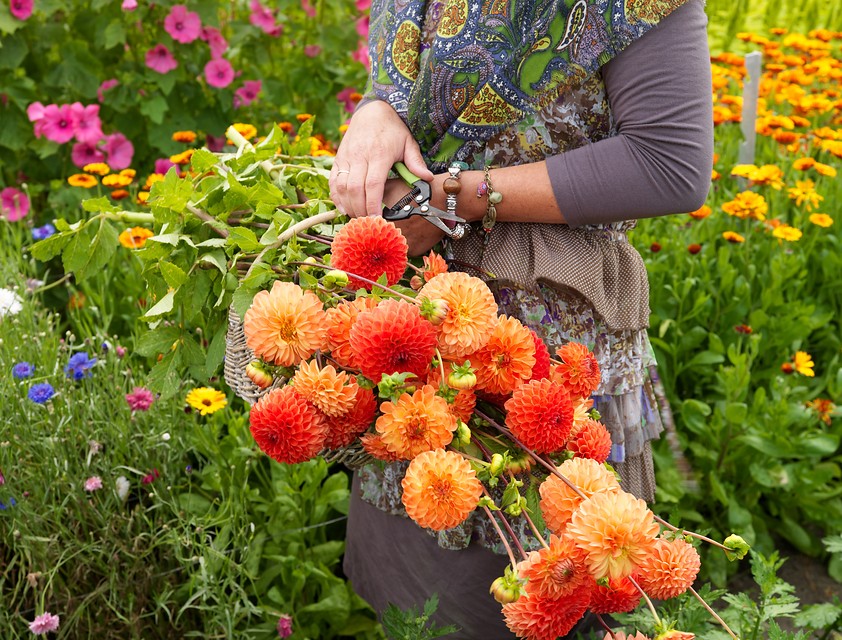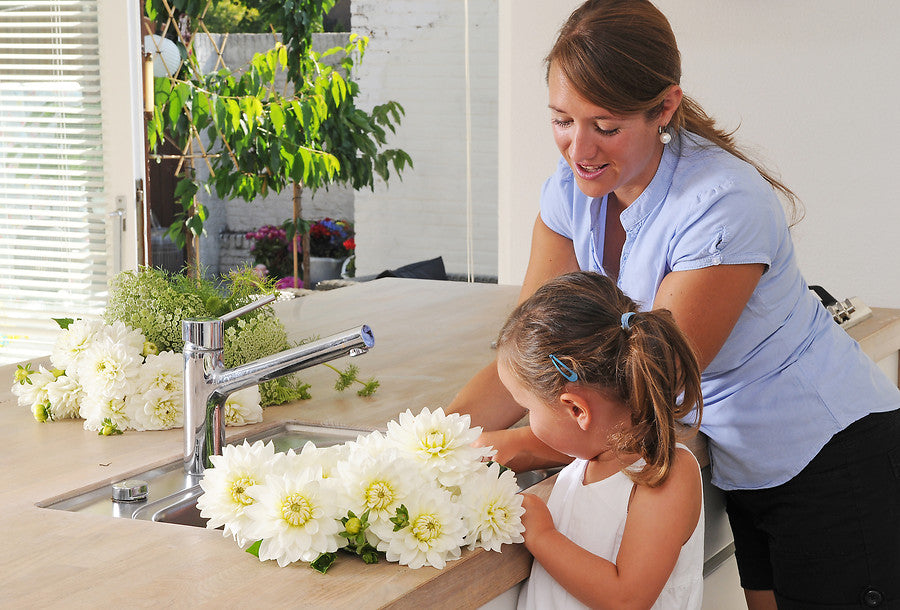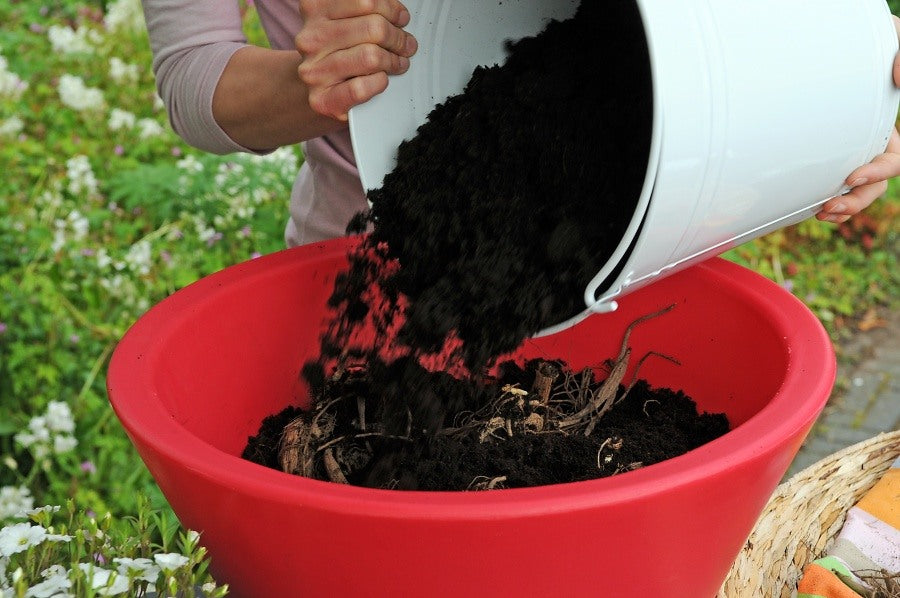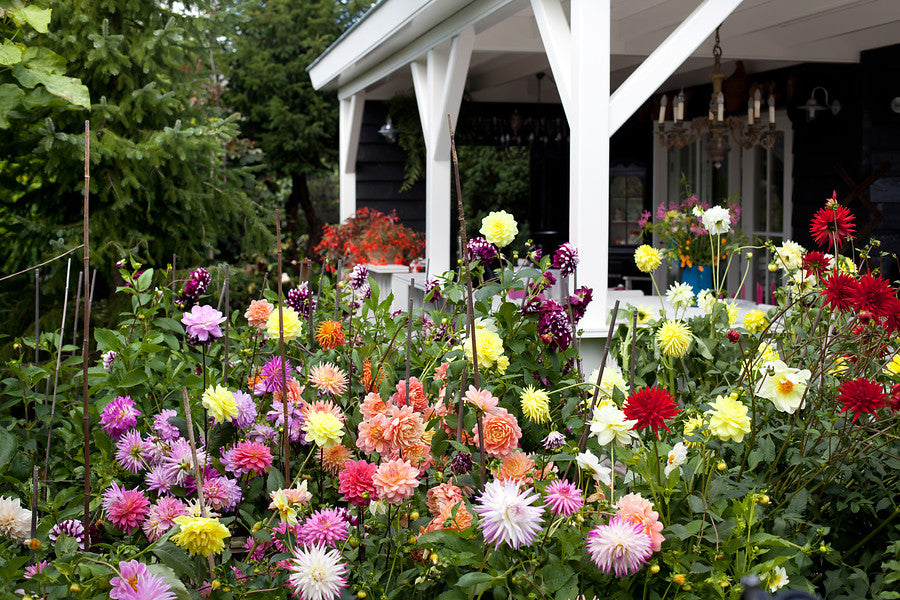
The Best Dahlias for Cut Flowers
By Naomi Jones
Dahlias are one of the best garden plants for growing for use as cut flowers. Not only do they have an outstanding vase life, but they provide a season-long supply of spectacular blooms from mid summer right through to the first frosts. You can cut your dahlias regularly to enjoy in the home – the more you pick, the more they keep coming!
Of course, they look great in the garden as well, producing endless blooms on strong bushy plants that provide structure and interest at a height. These versatile plants look fitting in virtually any kind of planting scheme, from mixed country-style borders, to tropical or contemporary schemes. If you don’t have borders, choose dwarf varieties and they’ll grow happily in pots.
Dahlia flowers not only look good, but they provide a good source of nectar for bees and butterflies too. There’s a huge choice of different types to choose from with flowers in various forms and a spectrum of colours. While all dahlias are good for cutting, some types are particularly so, with long stems and extra large blooms that will dazzle in any indoor posy. Here are some of the best types for cutting:
Dinner Plate / Decorative Dahlias
Typically reaching a height of up to 1m, these are real border beauties. Aptly names ‘dinner plate’ dahlias, their flowers reach up to 30cm in diameter. The flamboyant, large blooms are produced continuously throughout summer on long, strong stems.
View all Dinner Plate Dahlias →
Cactus Dahlias
Cactus-flowered dahlias are formed in an explosion of pointed petals, much like a cactus flower. These firework-like blooms are as eye-catching in the border as they are in the vase. Available in a great range of single and bi-colours, they put on a real show.
Pompon Dahlias
These classic dahlias with neatly-formed ball-shaped flowers have a wonderful structure that really stands out in the garden, appearing to float above the foliage on their long stems. These block-colour blooms provide an eye-popping contrast in mixed bouquets, and they also look fantastic in single-stem vases.
Dahlias for Pots
You can grow your own dahlias for cutting even if you don’t have a lot of space. There’s a great range of dwarf varieties that will grow happily in a pot on a sunny balcony or patio, such as large-flowered Dahlia ‘Orange Nugget’ (pictured). Bishop dahlias are also fairly compact and suitable for growing in containers, their single flowers are the best for attracting bees and butterflies, but they also make pretty cut flowers plus they have attractive dark foliage too.
Tips on how to cut and arrange Dahlias
- Cut the blooms regularly to display indoors while they’re looking their best. The more you cut, the more will grow. Those that are left on the plant should be deadheaded as soon as they’re over to help keep fresh blooms coming.
- The best time to cut dahlias is in the morning while they’re still cool.
- Snip the stems horizontally across base of the stalk, just above where it meets the main stem and leaf nodes. You can then snip the flower stalk down to the right length when arranging.
- Put the ends of the freshly-cut flowers into a container with very hot water for up to an hour before arranging, this treatment will help them to last even longer in the vase. Transfer them straight away to a prepared vase of cool water afterwards.
- Remove any foliage from the stems before arranging to avoid them decaying in the water.
- Change the water in the vase every couple of days to help keep the flowers fresh for longer.
- Ensure all the stems are the same length before arranging. You can create a cottage-style bouquet by bunching them together with other summer flowers, or go for a more contemporary look and keep it simple with single-stem or single variety arrangements.
How to grow Dahlias
Dahlias thrive best in full sun in any well drained soil. Tall varieties look great in a mixed sunny border, whereas shorter varieties will be fine in either a border or a patio container.
Dahlias are grown from tubers, and the best time to plant them is in the spring. They’re frost tender, so you’ll need to pot them up and grow them on in a bright, frost-free place to start with - a conservatory or greenhouse is perfect.
Once your dahlia tubers have arrived, soak them in a bucket of water for a few hours before planting to help activate them into growth. Prepare enough large pots (2-3 litres) to plant one tuber in each. Half fill each pot with multipurpose compost, mixed with a handful of slow-release fertiliser granules. Position one tuber on the surface before topping up with more of the compost and fertiliser mixture.
Once planted, water each pot thoroughly. Sit the pot on a water-tight tray and leave to grow on indoors until around late May when risk of frost has passed, then plant each one out into the garden.
Tall varieties with large flowers may require staking, and it’s a good idea to secure the stems to stakes before they start to flop. Water your dahlias regularly throughout the growing season and feed them fortnightly with a liquid feed to encourage maximum flowering. Pick the blooms regularly to use indoors and deadhead any that are left on the plant which have passed their best.
Dahlias often flower well into autumn. In order to save them for next year, cut back the stems and lift the tubers from the ground before the first frosts. Shake off any excess soil and store them in a dry, frost-free place for winter.
 |
Naomi Jones |























































































































































































































